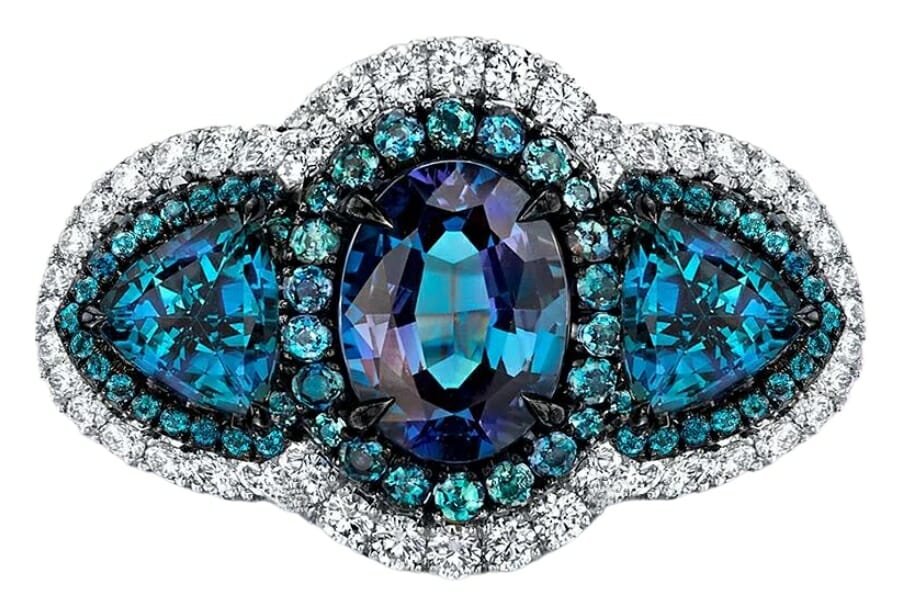Gem lovers have been drawn to Alexandrite for hundreds of years by its beauty. Its rare ability to change colors—from green in daylight to a reddish-purple under incandescent light—is like magic in a stone.
This fascinating quality makes it stand out from other gems and sends its value through the roof among collectors and experts. Its price isn’t just a reflection of how rare it is; it’s also a tribute to its rich history, which dates back to the 19th-century Russian Empire.
The gem was named after Tsar Alexander II and has kept its royal look ever since. It’s more than just pretty on the outside; it embodies a fascinating story woven with historical elegance.
By looking at Alexandrite’s price, value, and worth, we can learn much about its history that goes far beyond how it looks.
What Alexandrite Is
Alexandrite is a mysterious gem that seems to change colors as the light changes. This rare and beautiful gemstone is a type of the mineral chrysoberyl. The most valuable thing about it is that it changes color from a beautiful green in daylight to a purple-red in incandescent light.
We’ve written down how much each color of alexandrite costs. Different types of alexandrite contain other trace elements, which aren’t the only colors but the most common.
Blue Alexandrite
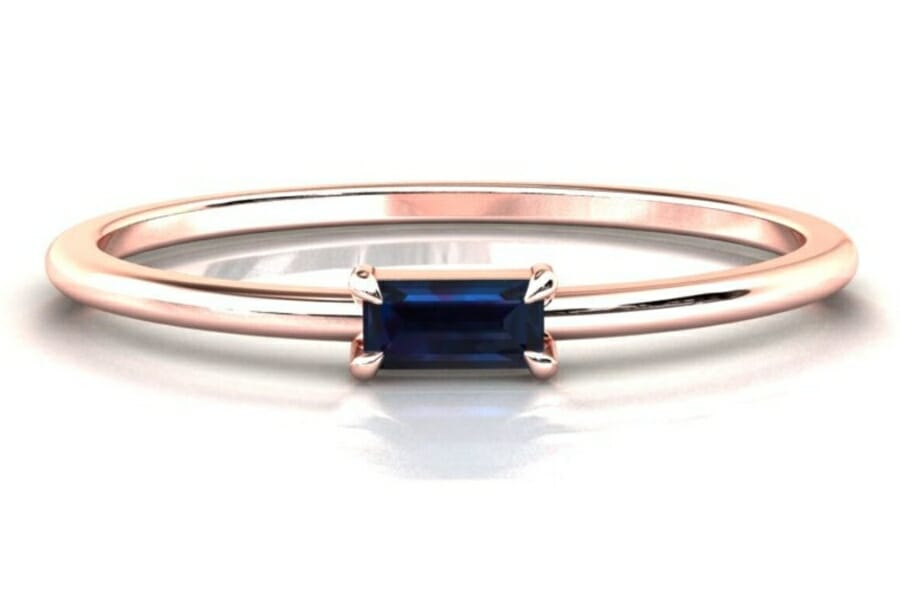
Blue Alexandrite is a phrase that might spark curiosity among gem lovers because it’s known for its enchanting color change phenomenon. But because there are so many kinds of gemstones, there are bound to be differences, and some may have an unusual bluish color.
Even though it’s not usual, a bluish color could show up in the stone if the light is just right or if it has certain elements. A bluish alexandrite is just right if it has certain trace elements. It would be a unique addition to the wide range of colors that make this gemstone so popular.
How much is a blue alexandrite worth
Blue alexandrite is a rare and valuable variant, and the price can range widely— anywhere from $15,000 to $70,000 per carat.
The exact price per carat would depend on various factors, including the intensity and purity of color, the clarity and cut of the gemstone, and its overall quality and origin.
Green Alexandrite
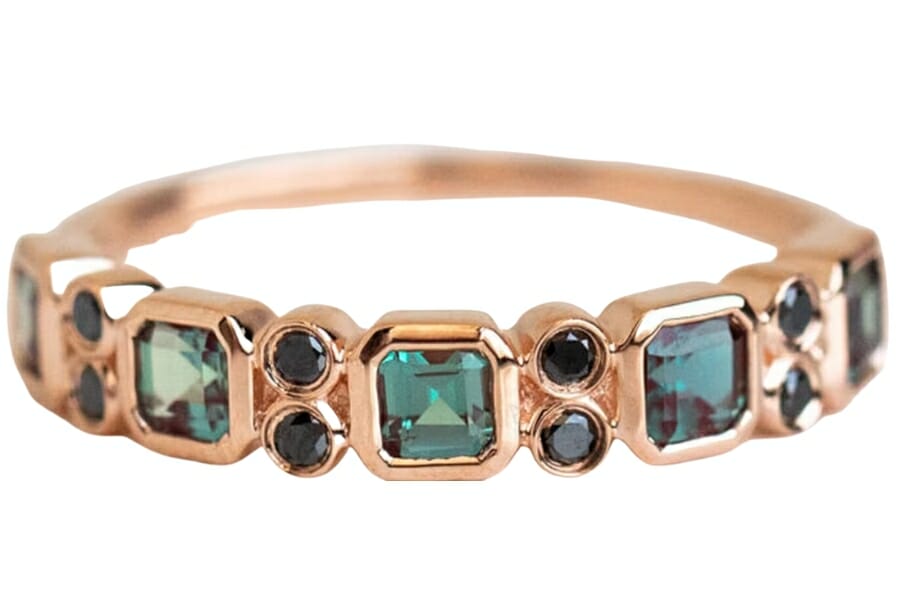
The green of alexandrite is more than just a color—it’s a natural show. It’s often speckled with undertones that change from bluish-green to yellowish-green depending on where it comes from and how you look at it.
With its Russian imperial roots, this gem has a green color that makes it look like it is filled with the fresh air of spring. As the light playfully bounces off its many surfaces, each angle reveals a new, lively shade of green that seems to be having a good time playing with light.
This daytime color is part of the magical color change alexandrite is well-known for.
How much is a green alexandrite worth
Prices for precious gemstones like alexandrite can change significantly depending on demand, discoveries, and economic factors. The price per carat for high-quality green alexandrite can range from around $10,000 to $50,000.
Grey Alexandrite
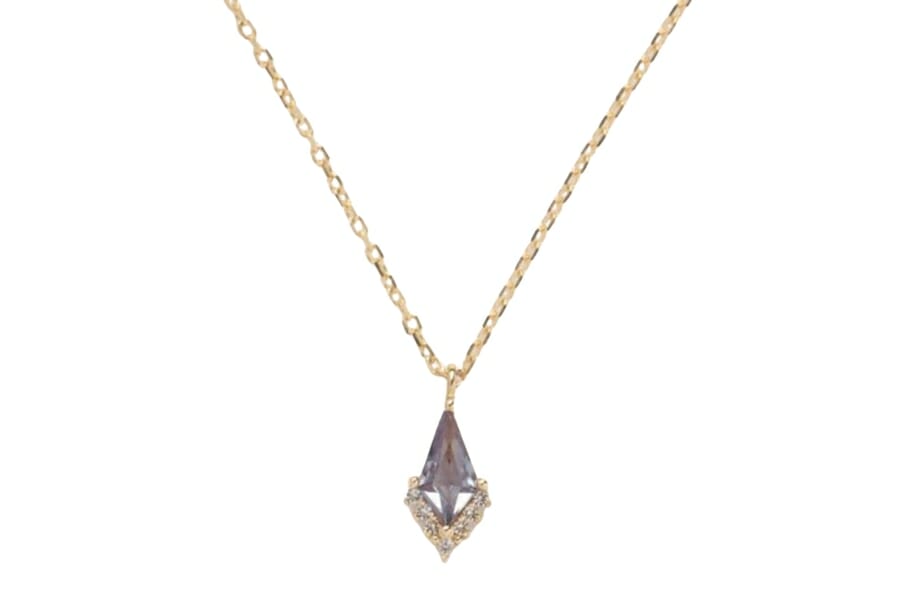
Grey alexandrite may not follow the traditional story about how alexandrite changes color, which has become a part of gemstone folklore. Instead, it might have a quiet, sophisticated charm that appeals to people who like subtlety over showmanship.
The grey may have a softer, more understated elegance than its more famous sibling, which goes from a bright green to a fiery red. Its gentle aesthetic doesn’t scream for attention but rather waits to be found and appreciated by someone with a good eye.
In the world of rare gemstones, the grey alexandrite stands out as an example of how nature’s minerals can look different. It’s an invitation to go beyond the usual and look at the other, muted colors that lie beyond the story of how colors change.
How much is a grey alexandrite worth
If most of an alexandrite’s color is grey, it might be seen as a less desirable stone on the market, decreasing its price. Grey could also mean that the color is not as intense or bright, which is not as highly valued in alexandrite. Its prices range from $3,000 to $20,000 per carat.
Pink Alexandrite
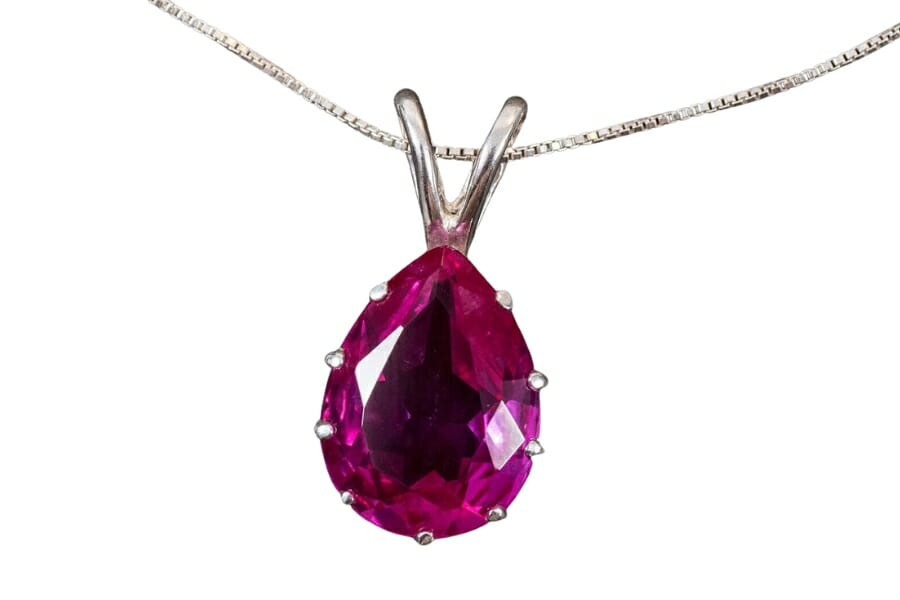
Pink alexandrite is a mysterious addition to the world of gemstones. It has a soft color in a world where bold statements are often the norm. It’s an ode to the more soothing colors of the spectrum. The pale pink undertones create a peaceful pause, like a whisper in the middle of a louder story.
They might remind you of the first blush of dawn or the soft colors of the sun setting. It’s a call to enjoy the finer details and softer notes that make up the beautiful orchestra of gemology.
Even though pink alexandrite doesn’t change color in the dramatic way that has made alexandrite a famous gemstone, it has its own story to tell. Every angle tells a story of gentle serenity, quiet charm, and beauty at the heart of nature’s creations.
How much is a pink alexandrite worth
The value of a pink alexandrite gemstone would depend on several things, such as its color, clarity, cut, carat weight, and quality. Its price per carat is between $3,000 to $20,000.
Purple Alexandrite
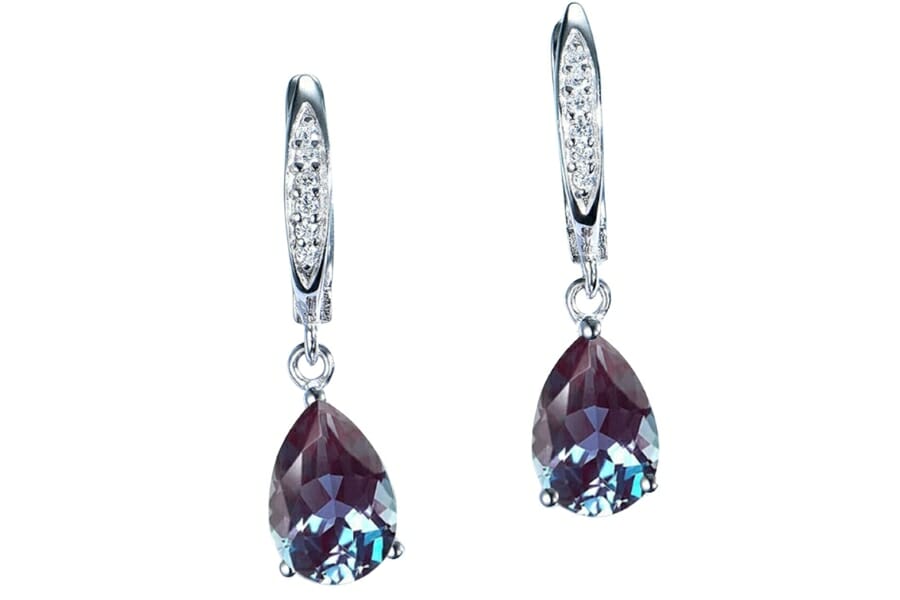
Purple alexandrite is a sophisticated color in this color-changing journey. This beautiful gem changes colors when it’s in different kinds of light. It’s a lovely green in daylight, but it’s a rich purple-red or muted purple in incandescent light.
The purple tones capture the essence of twilight, a mysterious mix of the day ending and the night coming on. This weird color adds a touch of royalty to alexandrite, which is often associated with royalty and wealth.
Each part seems to tell a story, maybe about royal courts from the past or mysterious nights under the stars. Its color invites you to look at it for a long time and get to know its story, which is constantly changing.
How much is a purple alexandrite worth
Purple alexandrite gemstones with a clear change in color and few flaws could cost anywhere from $10,000 to over $50,000 per carat or even more for very special pieces.
Red Alexandrite
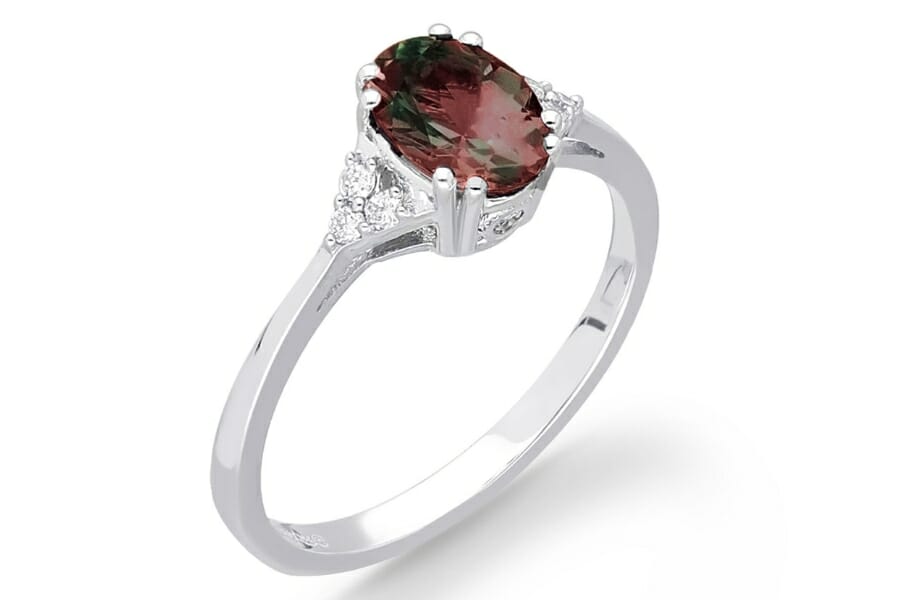
Red alexandrite is a color that comes from the stone’s rare ability to change colors depending on the light. It’s the evening outfit of this unique gem, which changes from a cool, calming green during the day to a fiery, warm red at night.
This deep red color reminds you of the last embers of the sky at sunset. It has the mystery and charm of the night that is coming. Each shade of red, from the intensity of ruby to the softer hints of burgundy, tells a story of rarity and the fantastic way nature works in a single gemstone.
How much is a red alexandrite worth
The market has always held a special place for gems that tell a tale, and red alexandrite doesn’t shy away from narrating its mysterious story of light, color, and rare beauty. Because of this, red alexandrites are worth around $10,000 to $50,000 per carat.
Why Alexandrite Is So Expensive
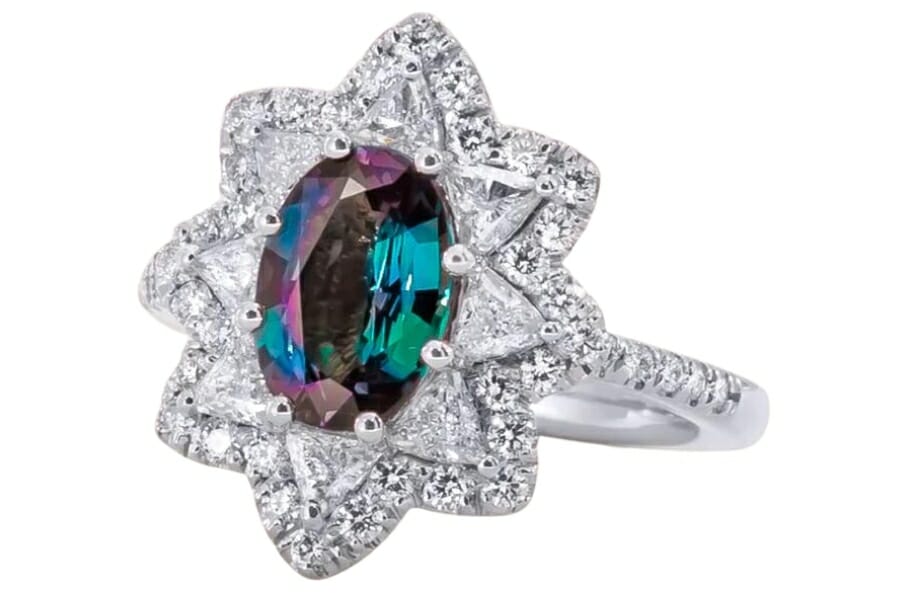
Alexandrite is highly regarded in the world of gemstones because it changes color in an interesting and beautiful way.
Its rare ability to show different colors in different kinds of light—a cool green in daylight and a warm red in incandescent light—is nothing short of magical, making it a prized possession for collectors and fans.
The fact that Alexandrite was found in Russia in the 1800s and named after Tsar Alexander II adds to its appeal. Owning an alexandrite is like having a piece of the Earth’s mysteries because of its long history and unique way of reflecting light.
Also, the fact that it is rare adds a lot to its value. Unlike more common gems, finding a high-quality alexandrite takes time and, often, a lot of money. The original deposits in the Ural Mountains have been used up for a long time.
Even though new sources have been found in Brazil, Sri Lanka, and East Africa, people are still looking for the perfect alexandrite. Alexandrite is one of the most valuable gems on the market because it is hard to find and changes color in a beautiful and important way in the history of gemstones.
Each alexandrite gem tells a story of geological wonder, historical prestige, and a constant charm that calls to people’s hearts drawn to rare gemstones’ beauty.
How To Determine The Value Of Alexandrite
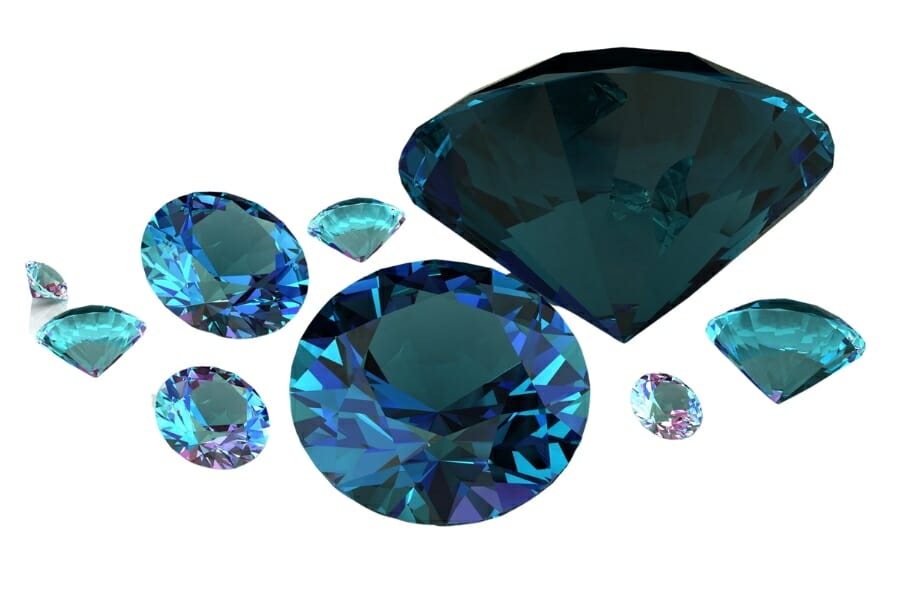
Each of these factors makes alexandrite more desirable and, in turn, increases its value in the gem market. Just a few of the most important ones are listed below:
Color Change
The hallmark of a genuine alexandrite is its color-change ability. The more dramatic and apparent the color change from green to red, the more valuable the gemstone. An intense color change under varying light conditions is highly prized.
Clarity
Like with many gemstones, clarity is paramount. Alexandrites with fewer inclusions are more valued as they allow for a better play of light, enhancing the color-change phenomenon.
Color Quality
The individual colors in different lighting conditions also contribute to its value. Rich, saturated hues are more desirable compared to dull or pale colors.
Carat Weight
Larger alexandrites are exceedingly rare; thus, the price per carat increases significantly with size.
Cut
A well-cut alexandrite will exhibit its color change more effectively and will have good brilliance. The cut should also minimize the appearance of inclusions to enhance the overall visual appeal.
Origin
The geographical source of the alexandrite can impact its value. Historically, Russian alexandrites are considered the most valuable, although fine stones from Brazil and Sri Lanka are also highly prized.
Treatment
Natural, untreated alexandrites command the highest prices. Any treatment to enhance color or clarity reduces the gemstone’s value.
Certification
Certification from a reputable gemological lab that attests to the alexandrite’s natural origin and discloses any treatments is crucial for determining its value.
Alexandrite’s Price By Color
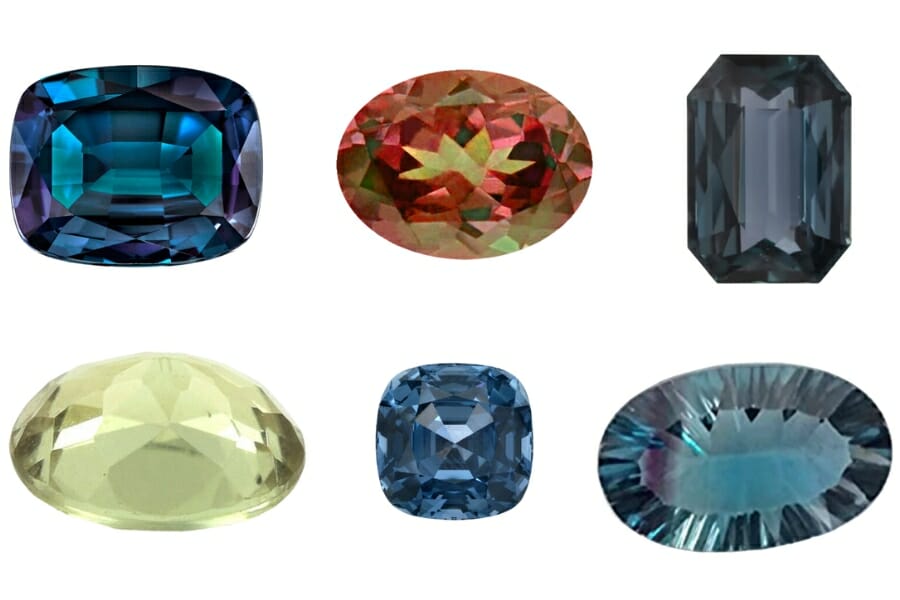
To know how much an alexandrite is worth and valuable, you must learn as much as possible.
Here are the most common colors and prices of alexandrite:
Alexandrite values by color
| Color | Location | Price (Per Carat) |
| Blue alexandrite | Any | $15,000 to $70,000 |
| Green alexandrite | Any | $10,000 to $50,000 |
| Grey alexandrite | Any | $3,000 to $20,000 |
| Pink alexandrite | Any | $3,000 to $20,000 |
| Purple alexandrite | Any | $10,000 to $50,000 |
| Red alexandrite | Any | $10,000 to $50,000 |
Alexandrite pricing by unit of measurement
| Measurement | Price |
| A carat of alexandrite | $3,000 to $70,000 |
| A gram of alexandrite | $15,000 to $350,000 |
| An ounce of alexandrite | $425,240 to $9,922,330 |
| A kilogram of alexandrite | $15,000,000 to $350,000,000 |
| A pound of alexandrite | $6,803,880 to $158,757,200 |
| A ton of alexandrite | $13,607,775,000 to $317,514,750,000 |
How To Get An Appraisal On Your Alexandrite
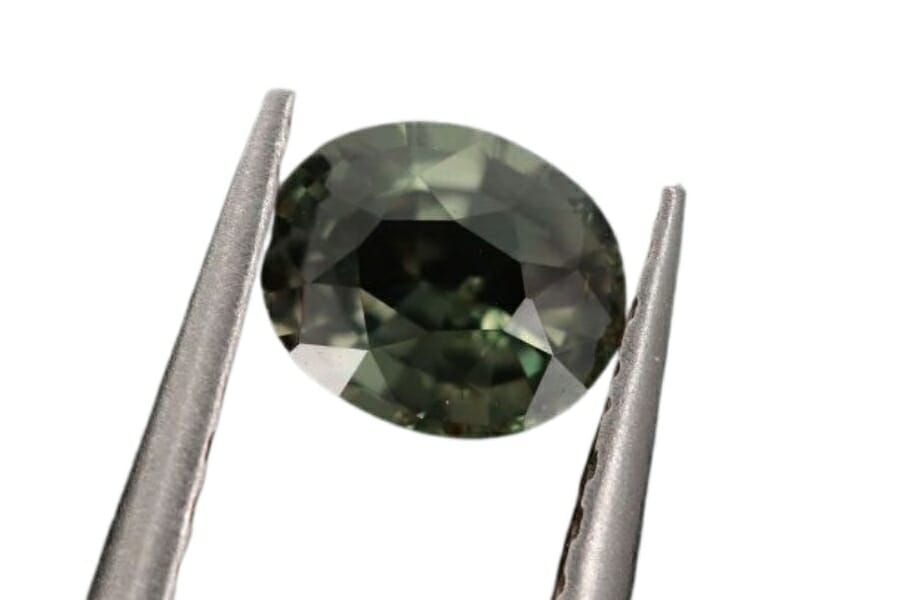
Getting an appraisal for alexandrite is a careful process that requires a gemologist or appraiser who knows about this rare and valuable stone.
Familiarize yourself with the essential characteristics of alexandrite, such as its color change property, clarity, cut, and carat weight. Understand the factors that contribute to its value, including origin, color quality, and treatment status.
Look for appraisers who specialize in colored gemstones, especially alexandrite. Ensure the appraiser has credentials from reputable appraisal organizations such as the American Society of Appraisers (ASA) or the National Association of Jewelry Appraisers (NAJA).
Make an appointment for a physical appraisal. Ensure the assessment will be done in your presence so you can learn more about your gemstone and ask questions.
Have your alexandrite cleaned professionally to ensure accurate assessment. If you have any previous documentation or certification for your alexandrite, bring it to the appointment.
The appraiser will examine your gemstone using specialized tools to assess its color, clarity, cut, carat weight, color change property, and possibly its origin and treatment status. They will provide a detailed analysis of your gemstone and explain the factors contributing to its value.
The report should include a thorough description of your alexandrite, photographs, the method used to evaluate its value, and the appraiser’s contact information. Make sure the appraisal report is signed and dated by the appraiser.
If your alexandrite is not already certified, you may ask your appraiser for recommendations on reputable gemological laboratories where you can obtain a certification.

